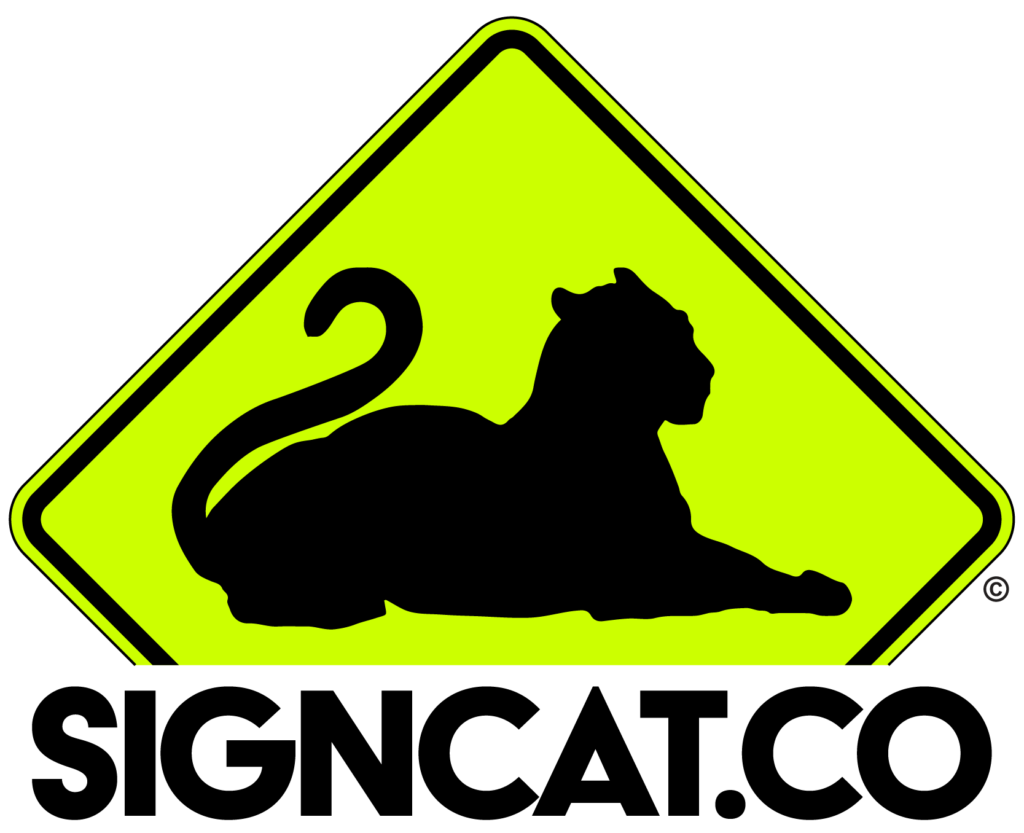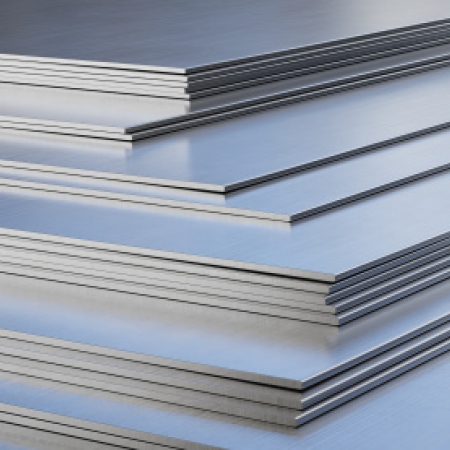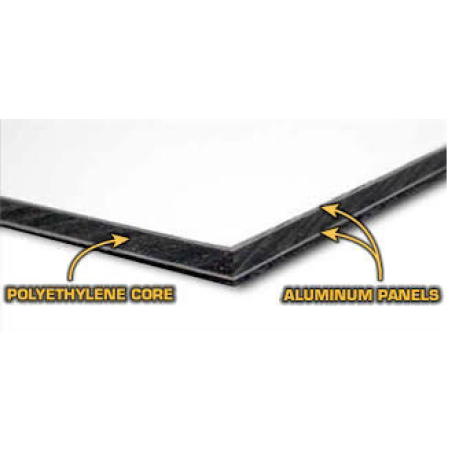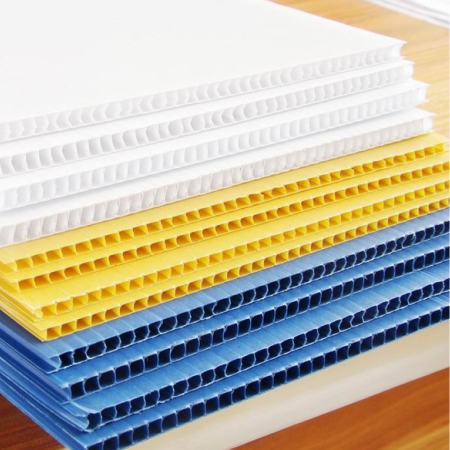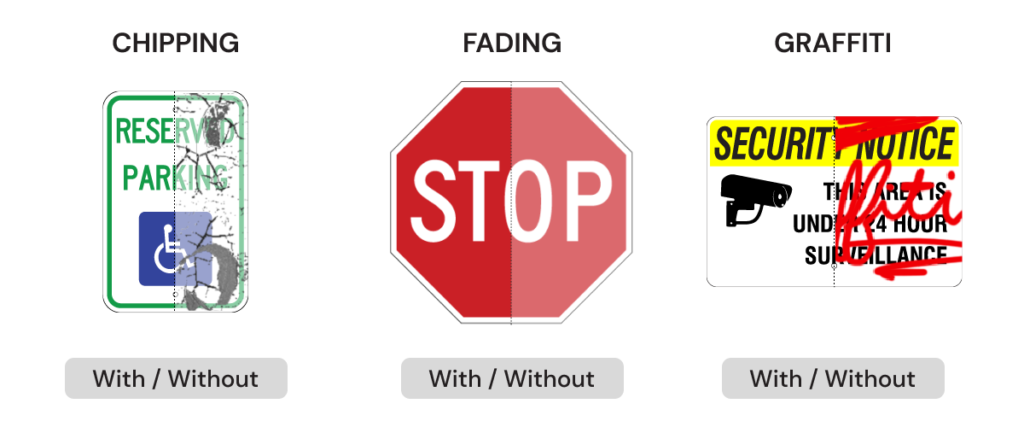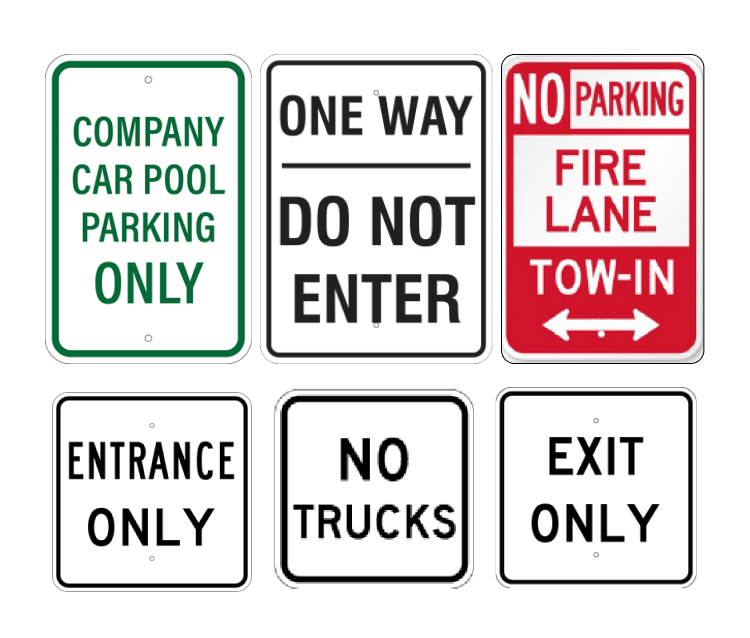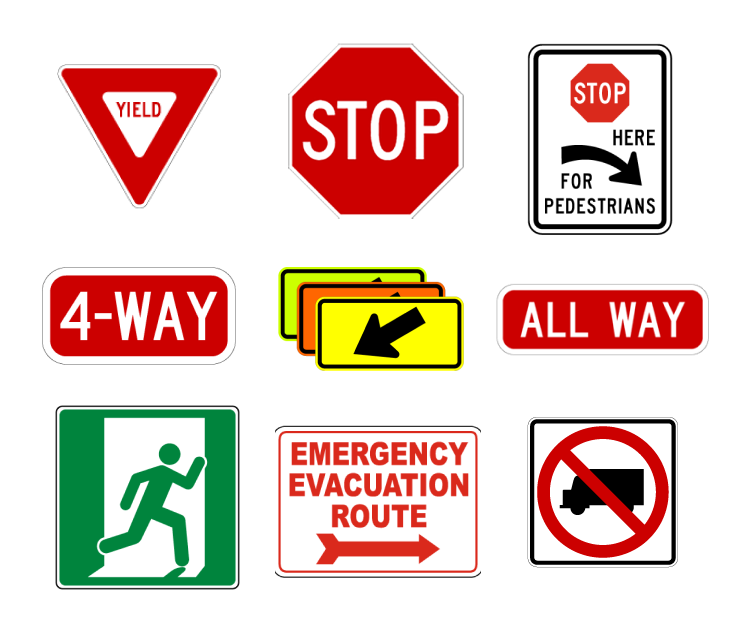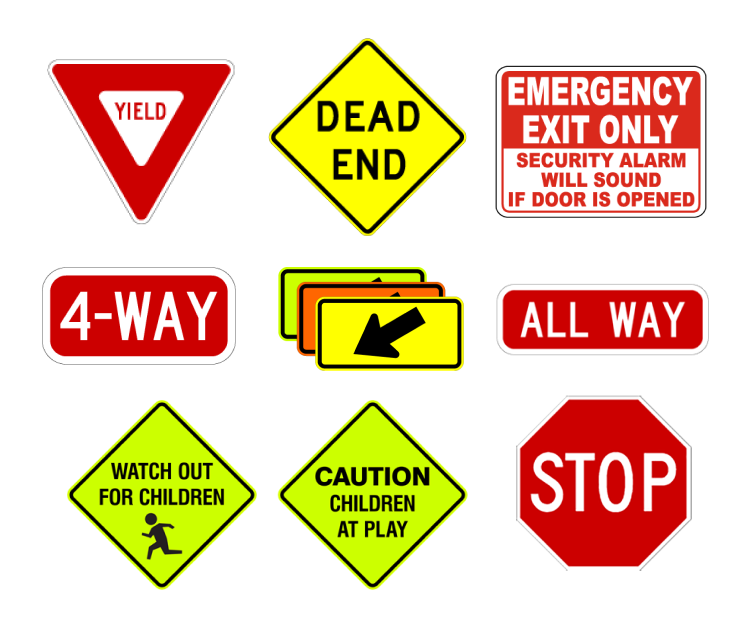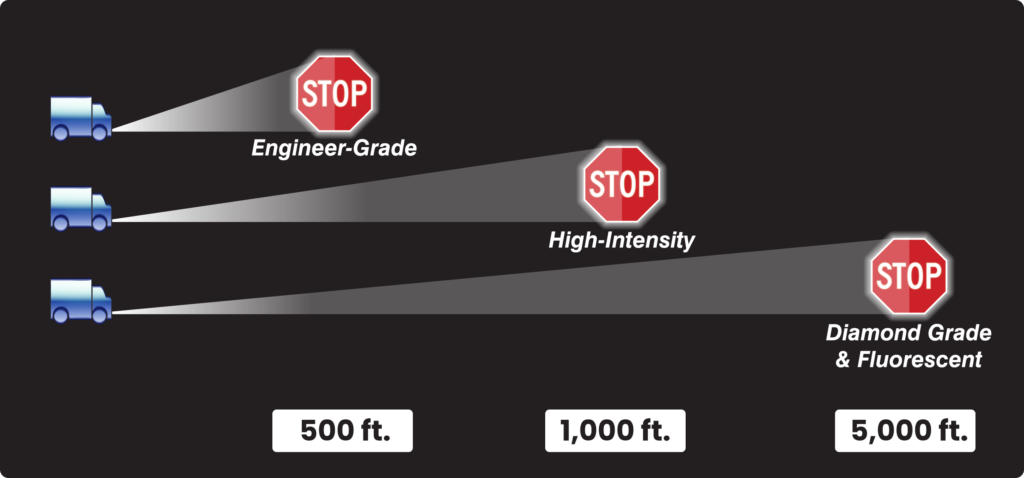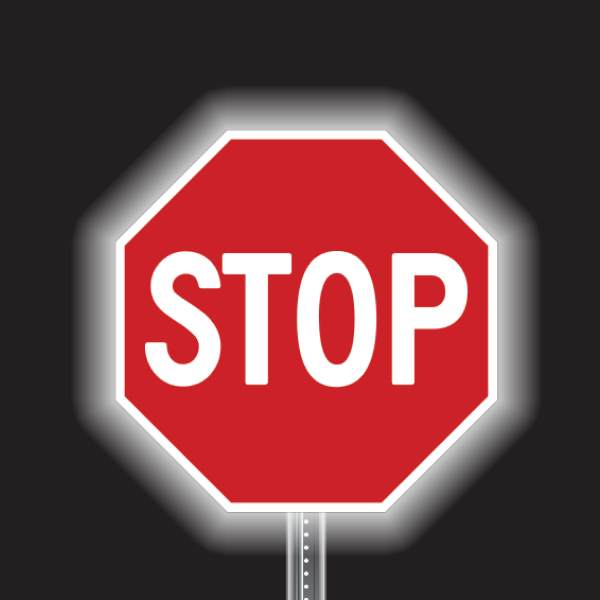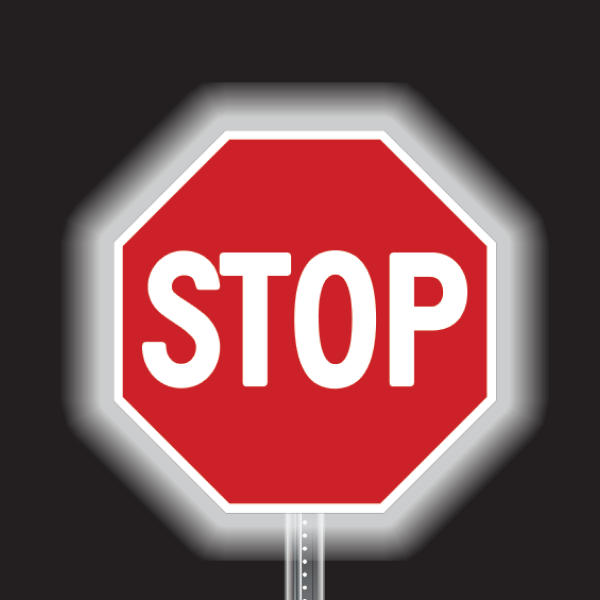Effective parking management is essential for ensuring the safety and convenience of users, especially in low-light environments where visibility is reduced. Whether in a parking garage, a lot, or alongside streets, low-light conditions present a higher risk of accidents, confusion, and miscommunication. Reflective parking signs play a pivotal role in improving safety in these environments by enhancing visibility and providing clear guidance to drivers and pedestrians alike. This article will explore how reflective parking signs can improve safety in low-light areas and provide actionable steps for implementing them effectively.
Introduction to Low-Light Safety Challenges
The Impact of Low-Light Conditions on Safety
Inadequate lighting in parking areas can be a serious safety hazard. Whether it’s early morning or late evening, poor lighting can impair drivers’ and pedestrians’ ability to navigate parking facilities safely. According to studies, accident rates in low-light conditions are significantly higher compared to well-lit areas. Drivers may have difficulty seeing important traffic signs, identifying pedestrian crossings, or even locating parking spots.
Low-light areas are also prone to theft, vandalism, and other criminal activities, making security another important concern. Reflective parking signs, in this context, can act as both a safety and security measure by improving visibility and reinforcing the organization within parking facilities.
Common Accidents in Low-Light Parking Areas
Parking lots and garages are notorious for fender-benders, collisions with pedestrians, and other minor but frequent accidents, many of which occur under low-light conditions. The most common types of accidents include:
- Rear-end collisions: Drivers may fail to notice vehicles ahead due to poor visibility.
- Parking lot accidents: In crowded lots, low lighting can cause drivers to misjudge distances or fail to see surrounding vehicles.
- Pedestrian accidents: Pedestrians are harder to spot in low-light areas, increasing the risk of being struck by a vehicle. Reflective parking signs can reduce these risks by providing enhanced visibility and guiding drivers to park safely, even in dimly lit conditions.
The Role of Reflective Parking Signs in Enhancing Visibility
What Are Reflective Signs?
Reflective signs are made from materials designed to reflect light, such as headlights from vehicles, making them visible even in low-light or nighttime conditions. Unlike standard signs, which may be hard to see in dim lighting, reflective parking signs catch and reflect available light sources, such as streetlights or car headlights, allowing them to remain legible at night or during bad weather.
These signs are coated with special reflective materials, including tiny glass beads or prismatic sheeting, which bounce light back towards its source, making the sign appear bright and easy to read in low-light scenarios.
How Reflective Signs Improve Safety
The most immediate benefit of reflective parking signs is their ability to remain visible when natural light is insufficient. This enhanced visibility leads to improved reaction times for drivers, who can read and respond to the signs more effectively. Whether it’s a “Stop,” “No Parking,” or “Pedestrian Crossing” sign, the reflective surface ensures that critical information is accessible at all times. Reflective signs reduce confusion and make it easier for drivers to follow traffic rules, ultimately decreasing the likelihood of accidents.
Additionally, reflective signs play a role in passive safety: they do not require external energy sources (like electric lighting) to function, making them a cost-effective and environmentally friendly safety measure.
Benefits of Reflective Parking Signs
Enhanced Visibility for Drivers
Reflective signs are especially valuable for guiding drivers through complex or unfamiliar parking facilities. When drivers enter a dimly lit parking lot, the risk of missing important information increases. Reflective signs minimize this risk by standing out against the dark background, making it easier for drivers to identify crucial instructions, such as speed limits, directional arrows, or designated parking areas.
For instance, a reflective “No Parking” sign in front of a fire lane ensures that drivers won’t inadvertently block emergency routes, while reflective speed limit signs encourage drivers to slow down in critical areas.
Improved Pedestrian Safety
Pedestrians are particularly vulnerable in low-light areas, as they are harder to see by drivers. Reflective pedestrian crossing signs and “Yield to Pedestrians” signs greatly improve awareness, reminding drivers to slow down and watch for people on foot. These signs, positioned near crosswalks or building entrances, can help reduce accidents involving pedestrians by drawing drivers’ attention to shared spaces within the parking lot.
Additionally, reflective signs near building exits or pathways can direct pedestrians toward safe walking routes, reducing the chances of crossing into dangerous areas with moving vehicles.
Reduced Risk of Collisions
Reflective parking signs help create a more organized and navigable parking environment, which in turn reduces the risk of vehicle collisions. For example, reflective directional signs guiding drivers through one-way lanes, or reflective “Stop” signs at key intersections, ensure that drivers can navigate the lot without confusion. By clearly marking paths and zones, reflective signs help prevent collisions, especially in busy parking structures where multiple vehicles are moving in tight spaces.
In addition, reflective “Caution” signs near potential hazards, such as tight turns or loading zones, can provide drivers with timely warnings, helping them take necessary precautions.
Types of Reflective Materials and Their Uses
Reflective parking signs come in various grades, each with different levels of reflectivity and durability. The type of reflective material you choose depends on your specific needs, such as the location of the sign and the expected amount of light available in the area.
Engineer-Grade Reflective Signs
Engineer-grade reflective signs are the most common type and are ideal for standard parking lots. These signs use glass beads embedded within the surface to reflect light back towards the source. They are suitable for areas where visibility is moderate, such as parking lots with some ambient lighting.
High-Intensity Prismatic (HIP) Reflective Signs
High-Intensity Prismatic (HIP) reflective signs are brighter and more durable than engineer-grade signs. They use a prismatic sheeting that reflects more light and offers better visibility from wider angles. HIP reflective signs are ideal for parking areas that experience extremely low lighting or those that are outdoors and exposed to various weather conditions.
Diamond-Grade Reflective Signs
Diamond-grade reflective signs are the most reflective and visible option, offering exceptional brightness. These signs use micro-prisms to reflect light and are visible from long distances. Diamond-grade reflective signs are typically used in areas that require the highest level of visibility, such as intersections within parking facilities, high-traffic areas, or places with almost no external light.
Best Practices for Implementing Reflective Parking Signs
Ideal Placement for Maximum Visibility
The effectiveness of reflective parking signs depends heavily on their placement. Ensure that reflective signs are positioned in locations that drivers are most likely to see, such as:
- At entrances and exits: Reflective “Entrance” and “Exit” signs can prevent wrong-way driving and streamline traffic flow.
- Near intersections: Reflective “Stop” and “Yield” signs can prevent collisions at busy intersections within the lot.
- Pedestrian crosswalks: Placing reflective signs near crosswalks reminds drivers to yield and pay attention to pedestrians. Ensure that signs are installed at appropriate heights, where they are not obstructed by vehicles or landscaping.
Maintaining and Replacing Reflective Signs
Reflective parking signs, like any other signs, require regular maintenance to remain effective. Over time, exposure to harsh weather conditions, dirt, and grime can reduce the reflectivity of the signs. Regular cleaning and inspections can help maintain their visibility. If signs become faded or damaged, replace them promptly to ensure continued safety.
Regulatory Considerations
In addition to improving safety, reflective parking signs must comply with local regulations and standards. In many jurisdictions, certain parking signs, such as handicap parking signs, must meet specific visibility and reflectivity standards. Be sure to consult local traffic laws and building codes to ensure that all reflective signs in your facility are compliant.
Successful Implementation of Reflective Parking Signs
Parking Garages and Commercial Complexes
In a large commercial complex in downtown Chicago, reflective parking signs were installed to improve safety in a dimly lit underground garage. The reflective “Stop,” “No Entry,” and directional signs significantly reduced the number of minor accidents and vehicle conflicts, particularly during peak evening hours when natural light was minimal.
Municipal and Public Parking Lots
In a municipal parking lot in a suburban area, high-intensity prismatic reflective signs were used to mark crosswalks and pedestrian zones. The improved visibility of these signs led to a noticeable reduction in pedestrian-related incidents, even during the late evening when foot traffic was high.
Long-Term Safety Benefits of Reflective Parking Signs
Reflective parking signs are an essential safety measure in low-light parking environments. They enhance visibility, reduce accidents, and improve the overall safety of both drivers and pedestrians. By investing in reflective parking signs, facility managers can create a safer, more organized parking experience while meeting regulatory standards. Over time, the use of reflective signs can lead to fewer accidents, a better user experience, and a more secure environment for everyone who uses the facility.
